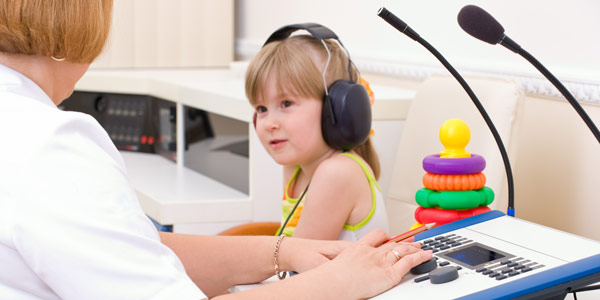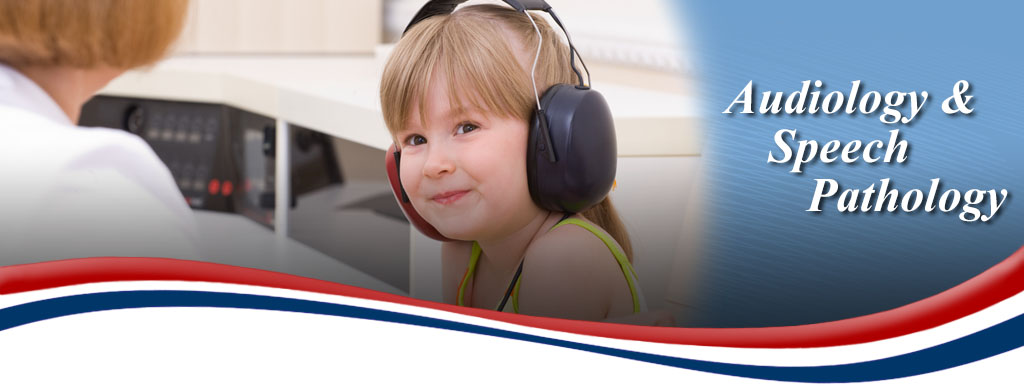Good hearing makes life easier. You can hear what’s going on around you (Whoa! It sounds like a truck’s about to come around that corner!). You also can hear what other people are saying and hear what you’re saying. That’s important because then you know your words are coming out clearly, so others can understand you.
Problems Often Found in Babies
But sometimes, kids have trouble hearing. Often, these problems are found while they are still babies. If parents and doctors notice a hearing problem in a baby or toddler, they can start taking steps early to help him or her hear better. If an older kid develops hearing trouble, he or she can get help, too.
One of the best people to see for a hearing problem is an audiologist (say: od-ee-OL-uh-jist). An audiologist is a specialist who’s been trained to understand how hearing works and how to help kids who don’t hear normally.
A kid who’s having trouble hearing could have a problem as simple as too much wax in the ears. This can be removed by a doctor and help the kid hear normally again.
But hearing problems also can be more complicated — a little like solving a mystery. Why? Because the ear has several different parts, it’s mostly hidden inside your head, and it connects to your brain. To make hearing happen, your ears need your brain and your brain needs your ears.
An audiologist can help figure out what the problem is with a kid’s hearing. He or she might send a report to the kid’s doctor, so they can work together on solving the problem. Kids with hearing problems may visit an audiologist regularly to see how the treatments are working and to make sure their hearing hasn’t changed.
What Will It Feel Like?
Anytime you have a medical appointment, you might be a little nervous. The audiologist knows this, so he or she will explain the exam and tests that will be done. You’ll have to put up with some poking in your ear, but generally, visiting the audiologist doesn’t hurt.
You’ve probably already had an otoscope (say: OH-tuh-scope) exam during your regular checkup at the doctor’s office. An otoscope is a tool that can be used to look inside your ear. It’s dark in there, so the otoscope has a light. The audiologist will use the otoscope to look around. He or she might pull on your ear a little bit to get different views inside. This will help the audiologist spot anything unusual that might explain your hearing trouble.
After seeing the way your ear looks, the audiologist will want to test how it’s working. One way to do that is with a test called tympanometry (say: tim-pah-NAW-met-ree). This tests how your eardrum moves. Did you know your eardrum moves? A normal eardrum vibrates (moves back and forth) in response to the sound that comes into your ear. But if you have fluid behind the eardrum, for instance, the eardrum won’t move as it should and this can affect hearing. Fluid behind the eardrum also can make your ear hurt.
To do this eardrum test, your audiologist will place a soft plug into your ear for a few seconds. It shouldn’t hurt, but you might feel a little pressure. This plug will detect eardrum movement and the movement will be shown as a bunch of lines on the equipment screen or on piece of paper that prints out. Ask the audiologist to show you how yours looked.
These lines tell the audiologist how your eardrum reacted. If your eardrum didn’t vibrate like it should, it is a clue about what’s causing the trouble with your hearing. Sometimes, if it’s an ear infection, medicine may help. Other times, more tests need to be done to figure out the problem and solve it.
Now Hear This!
 If your audiologist wants to do hearing tests, he or she will need your help. These tests are done to see how good — or poor — your hearing is in each ear. You’ll probably wear earphones and listen for different sounds. You might even go into a special soundproof booth to do this test. These rooms are designed so they don’t let any sound in at all. Then you’ll have complete quiet for your test and nothing will get in the way of you hearing the sounds.
If your audiologist wants to do hearing tests, he or she will need your help. These tests are done to see how good — or poor — your hearing is in each ear. You’ll probably wear earphones and listen for different sounds. You might even go into a special soundproof booth to do this test. These rooms are designed so they don’t let any sound in at all. Then you’ll have complete quiet for your test and nothing will get in the way of you hearing the sounds.
The test will take about 30 minutes, depending on how many different sounds and tests the audiologist wants to do. He or she might do pure-tone tests, which are used to figure out which tones and volumes you can hear. Or the audiologist might have you listen to words and repeat them.
Another test measures how well your inner ear is working. To test the inner ear, which is made of bone, you wear a special headband while you listen for the sounds. The headband needs to be tight to vibrate the bones in your middle ear and send the sound to your inner ear. Usually, one end of the headband will be behind your ear and the other end will be in front of your opposite ear.
Before the hearing test, you’ll also get some instructions about how you should signal that you can hear something and in which ear you’re hearing it. For example, you might be asked to push a button or raise your hand when you hear a sound or word.
Once your earphones are on your head correctly, the audiologist will go to a nearby room to do the test. There will be a window between the two rooms, but the glass might look a little dark. That’s on purpose. Why? Because the audiologist doesn’t want you to see everything he or she is doing. If you did, you might notice the doctor’s hand moving to send you a sound and that could tip you off that a sound is coming and affect the results. If you can’t see the doctor, then you’re just listening and the test is measuring your hearing alone.
What’s My Grade?
Good news! Hearing tests are not graded like the ones at school. Your audiologist might show you how you did on an audiogram — a chart that shows how well you hear. An audiogram uses decibels — a way of measuring sound — to show how well you hear. Soft sounds don’t have as many decibels as loud ones. Your audiogram would show you how many decibels you can hear.
But hearing is about more than loud and soft sounds. It’s also about frequency or pitch. That can be a little hard to understand, but think of it as the kind of sound it is. For instance, a metal whistle might make a high-pitched sound and a tuba might make a low-pitched one. Your audiogram also would show how well you hear at different pitches.
Hearing Loss and Hearing Aids
A kid’s hearing tests might show that he or she has some hearing loss. The problem might affect one ear or both. The good news is that there are many treatments for kids who have hearing loss.
Hearing aids are common. These are tiny devices that have microphones and make sounds louder so that someone with hearing loss can hear them. Sometimes, surgery can fix some or all of the hearing problem. If surgery only improves some hearing, wearing a hearing aid can help the person hear even better.
Kids who have hearing problems also can get other help. They might go to special schools, where all the kids have hearing problems. Or they might go to a regular school and get a little extra help when needed. Outside or inside school, the kid might get speech therapy to help with talking and understanding others.
If you’re a kid with hearing problems, many people want to help you hear as well as you can — and be as independent as possible. Who’s on this team? You, your family, your friends, your teachers, your doctors, your therapists, and especially your audiologist!







Leave A Comment